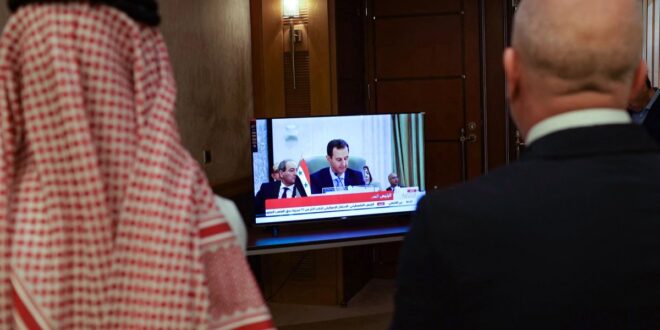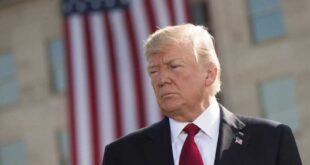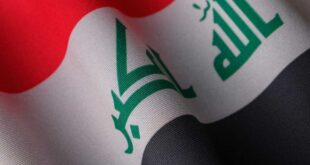Bashar al-Assad’s seemingly triumphant return to the Arab Leaguelast week was another sign of the region returning to the status quo ante. A dozen years ago, the world was seized with the idea that Middle Eastern politics and societies would soon be completely different. Now, Arab governments are ready to move on from Assad’s ostracization for forcing the displacement of half of his citizens, the death of a half million of them, and the torture of many others. The durability of Arab regimes has confounded Western analysts who have long argued that these systems could not endure.
Past performance is no guarantee of future results, however. Regional governments’ reluctance or inability to resolve the contradictions, weaknesses, and pathologies that contributed to the 2011 Arab revolts make them especially vulnerable to pressures and shocks that are buffeting them from outside the region. Many states are in weakened conditions already, and the next serious blow may well take down one or two.
Predicting the fall of Arab governments is a perilous business. Authoritarian governments fall only rarely, and poor performance is only loosely connected to failure. For some leaders, pure coercion has been the key to longevity. For others, coopting populations with oil wealth has worked best. Some, like Muammar Gaddafi or Saddam Hussein, combined both. Poor leadership—and in the case of Lebanon for some time, no leadership—does not collapse regimes. The reality is that mobilizing populations is hard, and most movements cannot manage the challenge.
One could argue further that the failure of 2011’s Arab revolts has made mobilization even more difficult. Governments fell, but nowhere has a durable democracy emerged. Judging from those events, one might reasonably argue that the options for Arab populations are a reconstitution of the regime or an ongoing civil war. Yet, a rising set of factors suggest that the region is on the verge of a profound change in direction.
At least five major factors combine to mean many Middle Eastern governments are weaker in 2023 than they were in 2011, and they are likely to grow weaker still. Four of them are at least partly beyond the control of regional governments but will require renewed focus from them.
One is water and climate change. On the water side, increased scarcity is a growing problem in many Middle Eastern countries. This is due to the increased utilization of water, partly for agriculture, partly to support larger populations, and partly because of wasteful use. New dam construction is affecting the flow of water across borders, increasingly turning farmlands fallow. But water scarcity is also a consequence of climate-induced drought and the depletion of aquifers.
On the climate side, unlivable temperatures are increasingly common in the Middle East, paralyzing dust storms are spreading, and desertification is thrusting desperate farmers from the countryside into marginal lives in cities. All of these affect lives and livelihoods, and no relief is in sight.
A second factor is a less favorable financial environment. The Covid-19 pandemic pushed many Middle Eastern governments to spend more to support their populations during the height of the pandemic and increased their indebtedness. Now, financial markets are more skeptical of emerging market debt, and borrowing costs have risen sharply. The International Monetary Fund’s willingness—and arguably, its ability—to intervene throughout the region is more constrained than it has been for quite some time. Financing constraints are likely to dampen major government investments for quite some time to come, despite governments’ need to jump-start their economies.
A third factor is the looming energy transition. Energy-exporting countries have helped bolster the entire region’s economy, partly through government-to-government aid, and partly through importing Arab labor. The prospect of a shift in global energy markets has pushed many of today’s energy exporters to focus inward, investing in diversifying their own economies and bolstering their own workforces as they prepare for a post-hydrocarbon future. This will mean much less money is available to other Arab governments and other Arab workers, and the effects will be felt both in government budget and remittances.
A fourth factor is rapidly changing technology. While technology is not a negative factor by itself, it will accelerate the velocity of change in commerce, communications patterns, labor markets, and much else. Governments will need to summon significant agility and creativity—and make the right infrastructure investments and adopt the right regulatory framework—to ensure that technological developments advance security and prosperity. Without the requisite agility, creativity, investments, and regulation, technology could set regional countries back.
One could argue that a fifth factor links the four preceding ones: the sustained weakness of civil society in regional countries. While a more robust civil society does not provide an obvious solution, it provides a method by which regional governments might navigate the challenges before them. Civil societies’ weakness forces governments to do much more and breeds passivity in the population. It inhibits experimentation and isolates government from its subjects. Writing almost 200 years ago, political philosopher Alexis de Tocqueville argued that democracy does what “even the most skillful government is powerless to achieve: it spreads throughout society a restless activity, a superabundant strength, an energy that never exists without it, and which, if circumstance are even slightly favorable, can accomplish miracles.” Regional governments act as if they are convinced that loosening constraints on civil society will unleash chaos. Yet it is hard to imagine how government-led change will be sufficient to manage the region’s mounting problems. Managing the growth of a more capable civil society sector is surely a less risky path, but it is a path that few seem interested in exploring.
None of this is intended to argue that the Middle East needs to promote the wholesale adoption of Western social and political norms, or that there is only one way to confront the challenges that the Middle East will confront in the coming years. But it does suggest that some of the Middle East’s most challenging times are ahead of it, and the burden on governments to respond swiftly and effectively to increasingly complex phenomena will increase. At the same time, the resources available to governments are likely to be constrained. The Middle East has not returned to the status quo ante. Instead, it is on the brink of transformation. It is up to the peoples and governments of the region to determine what that transformation will look like.
Jon B. Alterman is a senior vice president, holds the Zbigniew Brzezinski Chair in Global Security and Geostrategy, and is director of the Middle East Program at the Center for Strategic and International Studies in Washington, D.C.
 Geostrategic Media Political Commentary, Analysis, Security, Defense
Geostrategic Media Political Commentary, Analysis, Security, Defense





